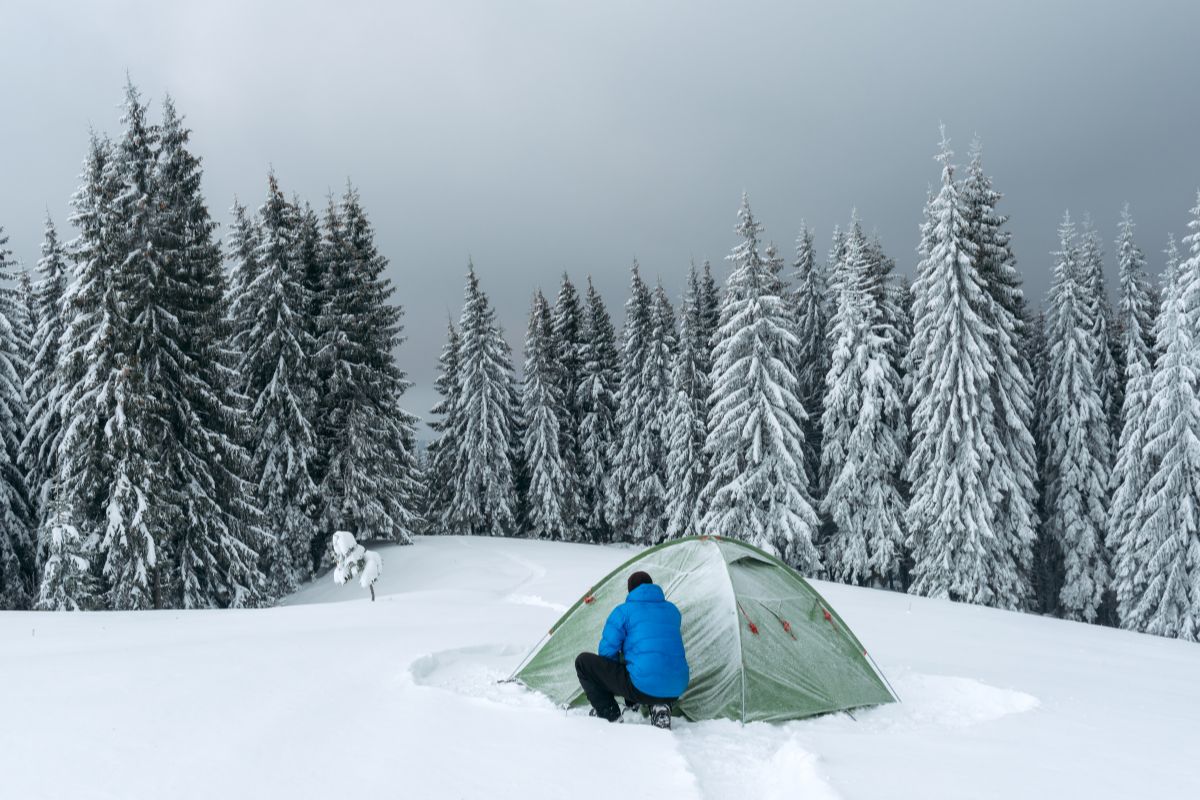Discover How To Use The Power of Authority Marketing To Make You Money While You Adventure!
No Experience, Existing Product Or Technical Skills Are Required
DO YOU BELIEVE ADVENTURES ARE WORTH CHASING?
We're an affiliate.
We hope you love the products/services we recommend on Just Van Life! So you know, there is the possibility we will collect a commission should you make a purchase via any of our links. This will in no way affect the purchase price. Thank you for your support, we really appreciate it!
Camping in the United States isn’t just a fad. Last year it was estimated that in 2021, nearly 57 million households in North America went camping, an increase of almost 9 million from the previous year.
With this pastime becoming more popular, you may be wondering whether it would be a good idea to take a fall or winter camping trip, especially if on your trip the weather takes a turn for the worse.
It is not surprising then that weather-related problems such as hypothermia are a real risk for those who aren’t properly prepared, especially in seasons where rain or temperature can change quickly.
For their regulations on winter camping, Yellowstone National Park prohibits fires in the backcountry during the winter season.
Understanding how to insulate your tent for wherever you decide to set camp will make for a better experience overall.
Below are what steps you can take to insulate your tent and what you should consider before you undertake the task at hand.

Prepare The Ground Of The Tent
This is the most important step because during the winter months the terrain can be wet to the extent where it can become frozen in some areas.
This means the placement of your tent is very important when determining your comfort levels during those bitter and cold nights.
If you are in an area with lots of leaves or patches of grass you can use a pile of these as a type of layer to keep everything warm inside the tent. If you’re in an open area or you
Find yourself around terrain like stone, the best method here is to use a soft/padded mat or covering.
To finish this step you want to seal any edges or small openings in the tent to prevent any cold air from circulating under or in the tent.
You can use undergrowth or patches of grass to fill in those gaps. If you’re in a particularly open area you can even use snow or any vegetation you come across.
Of course, it can be difficult to determine what type of layering you use here as you may not know where you’ll end up setting up camp for the night.
Having a good understanding of your surroundings will help you determine the terrain you pick to settle down for the night.
Covering The Tent
Being outside in a tent that lets in rain and spills on the inside is something no one wants to wake up to. Especially that cold air that can leak through and cause condensation and discomfort.
This is why investing in a good waterproof tarp is a no-brainer.
You can find some that have all the nails and ropes you need to fasten it into place. Some even come with a ground sheet so you have more underlay, which means more insulation for you.
The main thing you want to consider here is whether the tarp will be the right size and how easy it is to set up and disassemble if you’re not planning on staying put in one place for too long.
Wrapping The Tent
This part can be frustrating but it gives you that extra layer of protection from the elements outside. There are different ways you can go about this.
Most advanced campers recommend bubble wrap as a covering because of its lightweight design and the air in those bubbles act as another barrier of defense.
Once you’ve done this the bubble wrap can be fastened down with stones and can tuck into the tarp easily.
Another way you could do this is by using towels or a medium to large throw.
The only issue is that if it gets wet then that will put a huge strain on the structure of your tent and might not stop all of that precipitation from getting through.
Lining The Inside Of The Tent
This part is more to do with your comfort and stops the heat from escaping. This can also be done in different ways from laying a roll of reflective wrap to putting down more foam coverings.
You can also use thermal blankets or throws but you have to keep in mind the weight that you and your group can carry.
You can determine how much layering you’ll need to do by looking at the quality of the tent you intend to use. Is it double layered? Is it a lightweight or more sturdy design?
Frequently Asked Questions
What Size Tent Should I Get?
If you are setting out with a party of four and you’ve got a six-person tent it may seem productive with extra space, but another problem arises where there is more space you have to keep insulated if you and your group want to stay warm.
The best advice is to get a smaller tent and have a look around for 4-season tents which have thicker linings.
Where Should I Pitch My Tent?
This one might get overlooked but where you place your tent can make insulating the tent easier.
The best advice here is to avoid open plains and instead set up near shrubs or large rock formations to reduce the cold breeze and keep more heat in.
What Sort Of Coverings Should I Get?
There are many options out there and if you don’t like the idea of carrying around a roll of bubble wrap, you can get thermal coverings for the inside and a B-air tarp for the outside.
These types of tarps are waterproof and come in a variety of sizes that will suit any need or size of the tent.
Final Thoughts
Camping can be a great opportunity to connect with nature and people whatever the season brings. But, of course, things can go wrong, you may have over packed, and the weather can bring unexpected challenges.
You want to ensure that you follow the steps provided above and you follow the advice of national parks by following good housekeeping for the surrounding wildlife and other campers alike.
Discover How To Use The Power of Authority Marketing To Make You Money While You Adventure!
No Experience, Existing Product Or Technical Skills Are Required
DO YOU BELIEVE ADVENTURES ARE WORTH CHASING?
